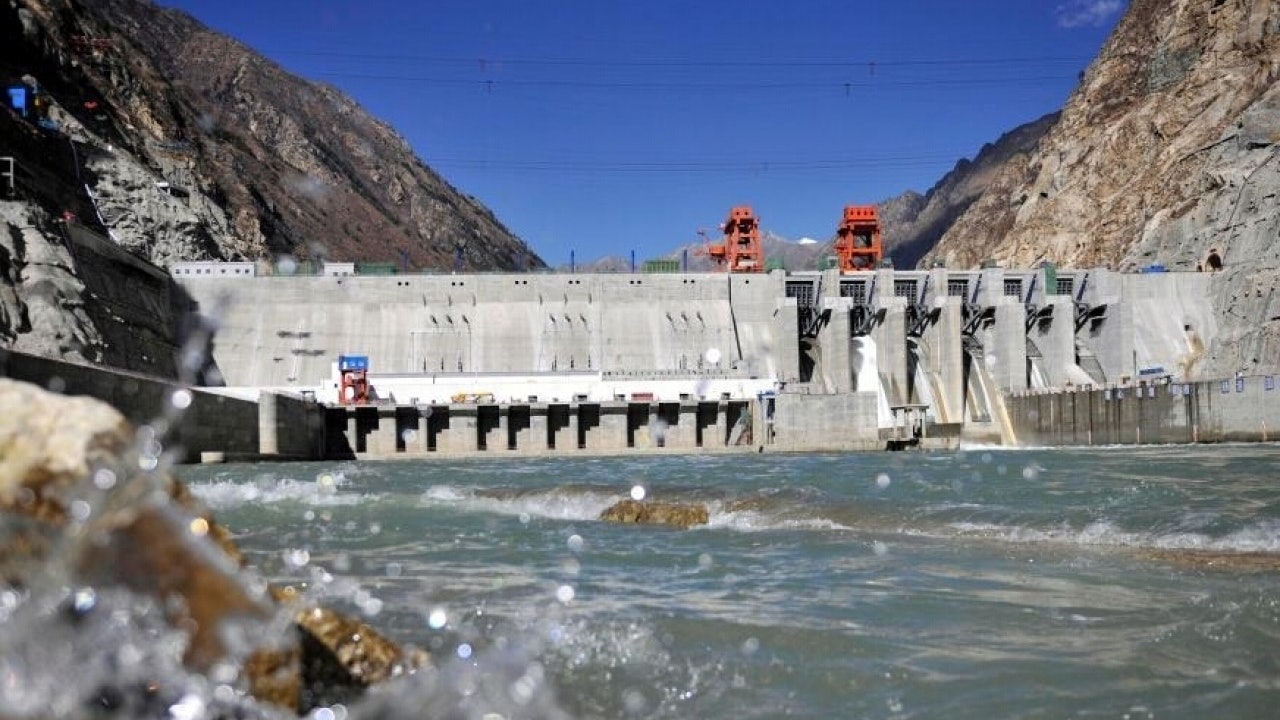The Yarlung Zangbo River Project surpasses the Three Gorges Dam! The triple impact of China’s construction of the world’s largest hydropower project

On July 19, Premier Li Qiang announced the official start of the Yarlung Zangbo River Lower Reaches Hydropower Project in Linzhi City, Tibet Autonomous Region. On the same day, Vice Premier Zhang Guoqing unveiled the newly established China Yajiang Group Co., Ltd. in Beijing. Zhang Guoqing emphasized that China Yajiang Group is “a major decision made by the Party Central Committee from a strategic and overall perspective” and “an important measure to ensure the smooth construction and operation of the Yaxia Hydropower Project.” This means that the Yarlung Zangbo River Lower Reaches Hydropower Project, a large-scale century project that has been brewing for many years and proposed and planned for at least four or five years, has entered the specific implementation stage.
During his research in Tibet, Li Qiang said, “The Yaxia Hydropower Project is large in scale, long in cycle, and far-reaching in impact. It can be called a century project.” “We must pay special attention to ecological protection to ensure that the ecological environment is not damaged.” “We must build the Yaxia Hydropower Project into a major landmark project in the new era with a high sense of mission and a spirit of responsibility to history and the people.”
According to reports from Chinese official news, the Yarlung Zangbo River downstream hydropower project is located in Linzhi City, Tibet Autonomous Region. It mainly adopts the development method of cutting bends and diverting water through tunnels to build 5 cascade power stations with a total investment of about 1.2 trillion yuan. The power of the project is mainly transmitted and consumed, taking into account the local self-use needs of Tibet.
The picture is taken by a drone on December 23, 2024. The Yarlung Zangbo River in Tibet can be seen in the photo. (Xinhua News Agency)
Many media and analysts believe that given that the Yarlung Zangbo River is the world’s highest river, flows through the world’s largest canyon, and has a huge water flow drop that contains rich water resources, the project is expected to have an installed capacity of about 60 million kilowatts to 70 million kilowatts, which is estimated to be the scale of three Three Gorges power stations.
In an introduction article published on the official website of the Chinese Ministry of Foreign Affairs at the beginning of this year, it was written: “It can provide nearly 300 billion kilowatt-hours of clean, renewable, zero-carbon electricity each year, enough to meet the annual electricity demand of more than 300 million people. After the project is completed, it will effectively reduce dependence on fossil fuels, and will play an important role in China’s promotion of the “dual carbon” goal, responding to global climate change, and promoting the world’s low-carbon development.”
Originally, the Three Gorges Power Station is already the world’s largest hydropower project. Today, the Yarlung Zangbo River downstream hydropower project has far exceeded the Three Gorges Power Station in terms of investment scale and project estimated installed capacity, undoubtedly breaking the record of the world’s largest hydropower project.
In 2018, the Yangtze River Three Gorges Reservoir played a flood control function and intercepted 1.26 billion cubic meters of the Yangtze River No. 1 flood in 2018. (VCG)
According to public information, the “Outline of the 14th Five-Year Plan for National Economic and Social Development of the People’s Republic of China and the Long-Term Goals for 2035” issued by Xinhua News Agency in March 2021 has officially proposed the construction of the Yarlung Zangbo River downstream hydropower base. On December 25, 2024, Xinhua News Agency announced that the Chinese government approved the Yarlung Zangbo River downstream hydropower project. On December 27, 2024, Foreign Ministry spokesman Mao Ning responded to questions from Indian media and said, “The development of the Yarlung Zangbo River downstream hydropower is aimed at accelerating the development of clean energy and responding to climate change and extreme hydrological disasters.” “The development of the Yarlung Zangbo River downstream hydropower has undergone decades of in-depth research, and there are corresponding safeguards in terms of engineering safety and ecological environmental protection, which will not have an adverse impact on the downstream.”
Compared with the long-term demonstration and public reports of the Three Gorges Project, there is relatively little public information about the Yarlung Zangbo River downstream hydropower project. This may be related to the impact of the Yarlung Zangbo River downstream hydropower project on India. Considering the complex ecological system of the Qinghai-Tibet Plateau, how to balance ecological protection, engineering safety and engineering quality is extremely challenging. However, it can be seen from official Chinese information that the Yarlung Zangbo River downstream hydropower project should have been studied in depth for decades, and the current official start of construction should be the result of the long-term development of China’s hydropower engineering technology and years of planning.
A “400-kilometer photovoltaic Great Wall” is being built in the Kubuqi Desert in Ordos, Inner Mongolia. (Xinhua)
At present, as long as the Yarlung Zangbo River downstream hydropower project can strictly achieve the original intention of the project planning, it will at least bring three impacts. First, exceeding the scale of the Three Gorges Power Station will bring huge renewable clean energy, which has significant economic effects and can reduce dependence on fossil fuels, which is conducive to promoting the “dual carbon” goal. In a larger context, the Yarlung Zangbo River downstream hydropower project, like China’s vigorously promoted photovoltaic power generation, is to provide a sustainable Chinese clean energy solution for the global response to the climate crisis and fossil energy crisis. Second, the huge investment of trillions of dollars will generate a large amount of demand, which will promote economic development. Third, the Yarlung Zangbo River is a cross-border river, and super-large hydropower development projects are conducive to exchanges and cooperation between China and downstream countries.
Since the Yarlung Zangbo River downstream hydropower project was first proposed, doubts from India have always existed. This is related to the complex relationship between China and India, and to India’s mentality of judging others by itself. After all, India threatens Pakistan by controlling the dams on the upper reaches of the Indus River.
But it should be acknowledged that there are still obvious differences between China and India. One strong evidence is that the Lancang-Mekong River cooperation proposed and promoted by the Chinese government has played a positive role in mutual benefit and win-win results. Similarly, the Yaxia Hydropower Development Project can play a regulatory role of “storing floodwater in the rainy season and releasing water in the dry season”, creating a practical need for cross-border river cooperation between China and India. If China can achieve mutual benefit and win-win results with India through the Yaxia Hydropower Development Project, it will have a positive impact on regional governance, relations between major powers, and peaceful development.
![]()







